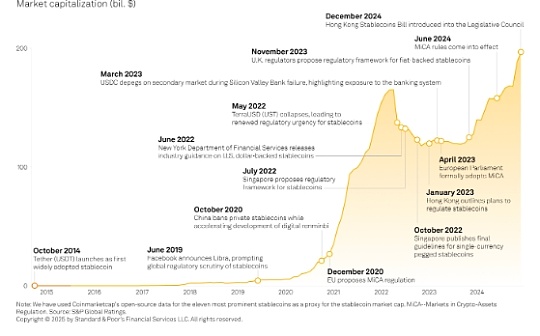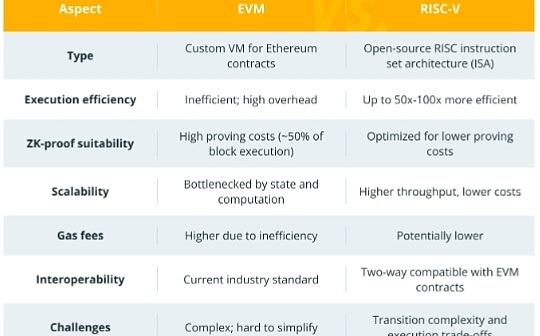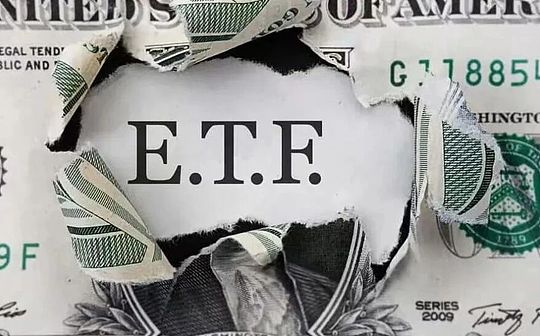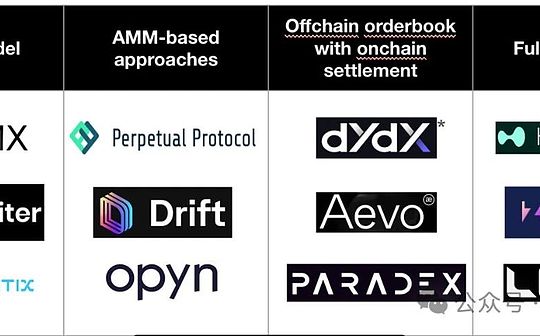
Compiled by: Bai Ding, Geek Web3

Exchanges are the core of the crypto market, and they support the operation of the market through trading behaviors between users.The primary goal of any exchange is to achieve efficient (low transaction costs and low slippage), fast and secure transaction matching.Based on this goal, DEX has made many innovations based on CEX, such as eliminating the trust assumption, avoiding intermediary and centralized control, allowing users to retain control of funds, and allowing the community to actively participate in the discussion and governance of product updates and iteration matters.
However, looking back at the development history of DeFi, we can see that although DEX has several advantages, it often comes at the cost of higher latency and lower liquidity, which is mainly due to the throughput and latency limitations of blockchain.
 (Transaction delay data for major public chains)
(Transaction delay data for major public chains)
According to data from Chainspect and some blockchain browsers, the spot trading volume of DEX now accounts for 15%-20% of the total trading volume in the crypto market, while perpetual contract trading only accounts for 5%.
In fact, it is not easy to develop perpetual contract business on DEX, because CEX has several major advantages in perpetual contract trading:
1. Better product experience
2. Efficient control of market makers provides a more refined price spread
3. Better liquidity (especially mainstream assets, and the ultimate goal of new project parties is to launch a large CEX)
4. One-stop combination of multiple functions (spot trading, derivatives, OTC and other scenarios can be directly nested and combined)
The centralization and monopoly of CEX have become problems that users cannot ignore, especially the collapse of FTX has further exacerbated the trend of centralization. Today, the CEX field is almost completely dominated by several giants. This centralization has brought systematicity to the encryption ecosystem.risk.By increasing DEX usage and increasing market share, such risks can be effectively reduced, thereby promoting the sustainable development of the entire crypto ecosystem.
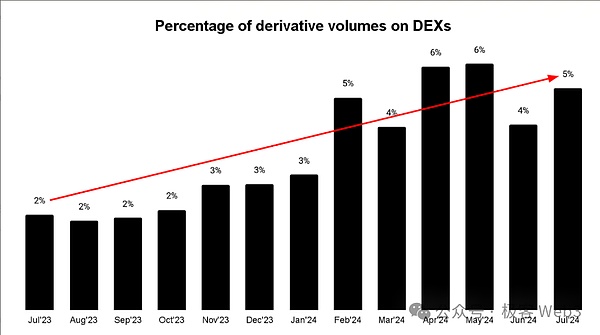
(Percentage of DEX derivative trading volume)
The rise of Ethereum 2 Layer2 and multi-chain ecosystems has provided innovation for liquidity sources and UX, which has created excellent conditions for the development of DEX, and it is currently a good time for the development of perpetual contract DEX.This article will conduct in-depth discussion on the current situation of perpetual contract DEX and introduce some DEX design concepts.
The PMF of perpetual contracts in the crypto ecosystem: becoming an important tool for speculation and hedging
Perpetual contracts allow traders to hold positions indefinitely, which is very similar to OTC futures trading in traditional finance (TradFi) markets over the years.The difference is,By introducing the concept of capital rate, perpetual contracts popularize futures, a trading method that only faces certified investors in traditional finance, allowing more retail investors to participate, and also creates a “under-damping effect”.To a certain extent, prevent excessive imbalance of long and short structures.
(The capital rate system can prevent the contract price from deviating too much from the spot price. The rate is often determined by the comparison of long-short forces in the market. When the longs dominate, the long-shoulder price will rise, slightly higher than the spot price. At this time,The capital fee rate is positive, and the longs need to pay a certain fee to the shorts. In this way, people’s willingness to go long will be moderately weakened to prevent excessive increase in bullish contract prices)
The current perpetual contract market has exceeded US$120 billion in monthly trading volume. Such a market size is due to the exchange providing a good user experience, and the order book mechanism promotes trading efficiency, andVertical integrated clearing systemMake liquidation complete quickly and safely.
(Vertical integrated clearing system refers to the entire process of clearing that is fully controlled and managed by a single entity or platform, and does not rely on external clearing agencies or third-party services. In contrast, the separate clearing system is, the exchange and the clearing house are independent of each other and are each other.Separate, assume different functions separately. Vertical integration of clearing systems is more efficient, while separate clearing systems pay more attention to transparency and supervision)
In addition, projects like Ethena that use perpetual contracts as the underlying mechanism have brought diversified uses to perpetual contracts other than speculation.Generally speaking, perpetual contracts have four advantages over traditional futures contracts:
1. Traders save on rollover fees and other related costs each time the contract expires
In traditional futures trading, if a trader wants to continue holding a position when the contract expires, he needs to close the current contract first and then buy a new contract for renewal. This is called “extendance”, that is, to turn an old contractChange to a new one.During the rollout process, traders need to pay related fees, bear the bid and offer spreads and other costs.The perpetual contract does not have an expiration date and does not require an extension, thus avoiding additional costs.
2. Avoid making forward contracts more expensive
In traditional futures markets, the price of forward contracts (future contracts with a longer expiration time) is usually higher than that of recent contracts (future contracts with a relatively recent expiration time), and this phenomenon is called “forward market structure”.When investors roll out, they usually need to buy new contracts at a higher price, thereby increasing the cost of holding positions.Perpetual contracts avoid this through funding rate mechanism.
For example, suppose that the futures price of a commodity in the March period is $100, while the futures price of a June period is $105.If you hold a March contract and switch to a June contract at expiration, you need to buy it for $105, adding $5 to the holding cost.Perpetual contracts have no expiration date, you can always hold the original position without paying a higher price.
3. The gold rate system provides continuous real-time profit and loss, simplifying the background processing process of contract holders and clearing systems
Perpetual contracts use capital rates to balance positions between long and short parties, and the settlement period is short (the industry standard is 8 hours, and Binance, Bybit, etc. all follow this standard). After each cycle is settled, it will automatically be automatically from the contract holder’s account.deduct or increase funds to provide holders with real-time profit and loss.At the same time, this real-time settlement can reflect the contract profit and loss of each trader.Compared with the daily settlement and daily market-oriented market of traditional futures, the real-time settlement of perpetual contracts is more efficient, simplifying the backend processing of contract holders’ funds management and clearing system.
4. Perpetual contracts provide a smoother price discovery process, avoiding violent oscillations caused by excessively rough price particle size
Price discovery refers to the process of pricing assets through various mechanisms among market participants.As mentioned above, while reflecting the market supply and demand situation, the contract price can be continuously adjusted so that it closely follows the spot, ensuring the continuous and stable price changes.At the same time, because the settlement period is short, the price discovery process is smoother. Compared with the daily settlement or monthly settlement of traditional futures, price fluctuations due to extension or delivery are avoided.
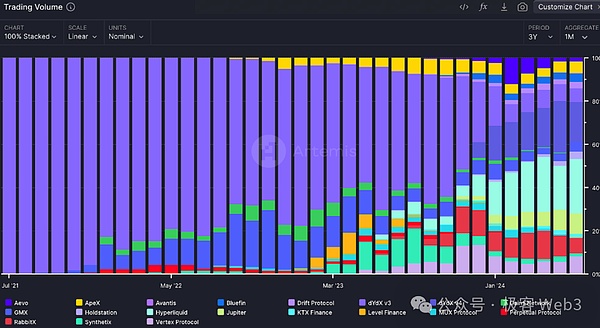
(Perpetual Contract DEX Market Share)
Since the BitMEX exchange first introduced perpetual contracts in 2016, perpetual contract DEX has begun to develop rapidly, and now there are more than 100 DEXs supporting perpetual contracts on the market.The scale of early perpetual contract DEX was very small. In 2017, dYdX was launched in the Ethereum ecosystem and dominated the perpetual contract market for a considerable period of time. Therefore, decentralized perpetual contract transactions were mainly concentrated on Ethereum., and the contract trading volume was very low at that time.And now, we can see active perpetual contract DEX on all chains, and contract trading has become an indispensable part of the crypto ecosystem.
Several studies have shown that with the growth of perpetual contract trading scale, the perpetual contract market has begun to have the function of price discovery when the spot market is inactive.The perpetual contract trading volume on DEX also increased from US$1 billion in July 2021 to US$120 billion in July 2024, with an annual compound growth rate of about 393%.
However, perpetual contract DEX faces bottlenecks due to the performance limitations of blockchain. To promote the further development of the perpetual contract market, it is necessary to solve the two core problems of low liquidity and high latency on the chain.High liquidity can reduce slippage, make the trading process smoother, and reduce user losses; low latency can enable market makers to report more compact prices, enable transactions to be executed quickly, and improve market fluency.
Pricing model of perpetual contract DEX
In perpetual contract DEX, the pricing mechanism is the key to ensuring that market prices accurately reflect supply and demand dynamics.Different perpetual contract DEXs adopt a variety of different pricing mechanisms to balance liquidity and reduce volatility.Below we will popularize several main models:
Oracle mode
The oracle model refers to the perpetual contract DEX obtaining price data from leading exchanges with large trading volumes and providing services based on this data.Although this approach has the risk of price manipulation, it can reduce the pricing cost of DEX.For example, the decentralized perpetual contract exchange GMX.
By using Chainlink oracle to obtain price data, GMX ensures the accuracy and completeness of prices, creating a friendly trading environment for price recipients (small institutions and individuals) while also providing price makers (large institutions and market makers) with the) provides generous rewards.However, such exchanges that use oracle mode to complete pricing generally face a problem, that is, they rely heavily on the price data sources of leading exchanges and can only serve as price recipients and cannot actively make price discovery.
Virtual automatic market makers vAMM
The virtual automatic market maker (vAMM) model is inspired by Uniswap’s AMM model, but the difference between the two is that the AMM model provides liquidity and pricing through actual fund pools and corresponding exchange rates, while the vAMM’s fund pool is virtual.There is no real asset, it just simulates the trading behavior of trading pairs through mathematical models, and then realizes pricing.
vAMM model can support perpetual contract trading without investing a lot of money and not having to be associated with spot stock, currently,The vAMM model has been adopted by Perpetual Protocol, Drift Protocol and other perpetual contract DEXs.Although vAMMs have problems with high slippage and impermanent losses, it is still an excellent on-chain pricing mechanism due to its transparency and decentralization.

(Product model classification of different perpetual contract DEXs)
Post-chain order book combined with on-chain settlement
To overcome the performance limitations of on-chain order matching,Some DEXs adopt a mix of on-chain order book and on-chain settlement.In this model, the transaction matching process is completed off-chain, while transaction settlement and asset custody are still on-chain.In this way, the user’s assets are always under their own control, which is the so-called “self-custodial”.At the same time, since transaction matching is carried out off-chain, risks such as MEV are greatly reduced.This design not only retains the security and transparency of decentralized finance, but also solves problems such as MEV, providing users with a safer and more reliable trading environment.
Some well-known projects, such as dYdX v3, Aevo and Paradex, use this hybrid model.This method improves efficiency while also ensuring safety, which is similar to Rollup’s concept.
Full-chain order book
The full-chain order book, that is, all data and operations related to transaction orders are fully published and processed on the chain, is the best in the traditional solution to maintain transaction integrity.Full-chain order book is almost the safest solution, but its disadvantages are also very obvious, which are obviously limited by the latency and throughput of blockchain.
in addition,The full-chain order book model also faces risks such as “pre-trading” and “market manipulation”.Pre-trading refers to the fact that when someone submits an order, other users (usually MEV Searcher) monitor the pending transactions and rush to get profits before the target transaction is executed.This situation is more common in the full-chain order book model, because all order data is publicly recorded on the chain, and anyone can view and formulate a MEV strategy.At the same time, in the full-chain order book model, since all orders are transparent, some participants may take advantage of this to influence market prices through large orders and other means, thereby obtaining improper benefits.
Despite the above problems with the full-chain order book, it still has considerable narrative appeal in terms of decentralization and security, likePublic chains such as Solana and Monad are working hard to improve infrastructure and prepare for the full-chain order book.Some projects such as Hyperliquid, dYdX v4, Zeta Markets, LogX and Kuru Labs are also constantly expanding the scope of the full-chain order book model.They either innovate on existing public chains or create their own application chains to develop high-performance full-chain order book systems.
DEX liquidity acquisition and UX improvement
Liquidity is the fundamental basis for every exchange to survive, but how to obtain initial liquidity is a difficult problem for exchanges.In the development of DeFi, emerging DEXs generally gain liquidity through incentives and market forces.Incentives often refer to liquidity mining, and the so-called market power is to provide traders with opportunities for arbitrage between different markets.But with more and more DEXs, the market share of a single DEX is getting smaller and smaller, and it is difficult to attract enough traders to achieve the “critical mass” of liquidity.
HereCritical mass means “effective scale”, which means that after something reaches a sufficient scale, it breaks through the minimum cost that can maintain the development of things to obtain the maximum profit in the long term.If the product exceeds or fails to reach the effective scale, the product cannot maximize profits. Good products must operate for a long time under the effective scale.As shown in the figure below, the horizontal axis is the product scale and the vertical axis is the total cost.

(Schematic diagram of effective scale of Critical mass)
In DEX, critical mass refers to the trading volume and liquidity threshold. Only when such thresholds are reached can a stable trading environment be provided and more users can be attracted.In perpetual contract DEX, liquidity is provided spontaneously by LPs, so a common way to achieve critical mass is to set up an LP pool with economic incentives.In this mode, LPs deposit their assets into a pool and receive some incentives to support transactions on DEX.
Many traditional DEXs provide high annualized rate of return (APY) or airdrop activity in order to attract LPs, but this method has one disadvantage, that is, in order to meet high APY and airdrop returns, DEX must use a large part of the token.As an LP mining reward, such an economic model cannot last long and will fall into the vicious flywheel of LP mining “mining and selling”. DEX may also collapse soon and cannot continue to operate.
Regarding the problem of initial liquidity acquisition of DEX, two new ideas have emerged recently: active liquidity vaults supported by community and cross-chain liquidity acquisition.
Perpetual contract DEX on Arbitrum—Hyperliquid is a typical case of using community-supported active liquidity vaults.HLP Vault is one of Hyperliquid’s core products, using the funds of community users to provide liquidity for Hyperliquid.HLP Treasury calculates fair prices by integrating data from Hyperliquid and other exchanges and implements profitable liquidity strategies across multiple assets.The benefits and losses (P&L) generated through these operations will be allocated based on the share of community participants in the vault.
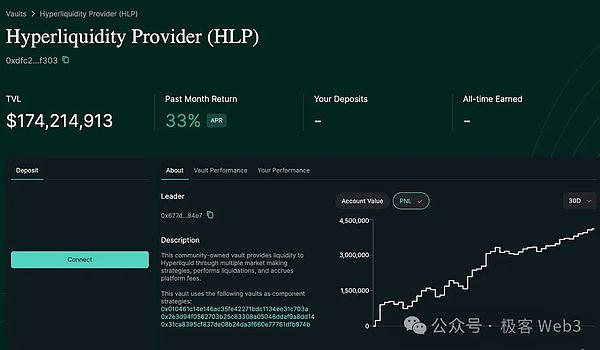
(Hyperliquid product interface)
Cross-chain liquidity allocation was proposed by Orderly Network and LogX Network.These projects allow the creation of a front-end on any chain for perpetual contract trading and enable liquidity leverage between all markets.The so-called“Leverage leverage between markets”, refers to integrating and utilizing liquidity resources across multiple markets or public chains. This method allows trading platforms to obtain liquidity on different markets or public chains.
By combining on-chain native liquidity, cross-chain aggregate liquidity, and creating discrete asset market neutrality (DAMN), it refers to integrating multiple independent assets to build an investment portfolio that is insensitive to market conditions, and hedging market fluctuations to the investment portfolioThe impact of AMM pool,LogX is able to maintain liquidity during periods of severe market fluctuations.These pools use stable assets such as USDT, USDC and wUSDM to achieve sustainable contract transactions with the help of oracles.Currently these infrastructures also provide the possibility for the development of various applications.
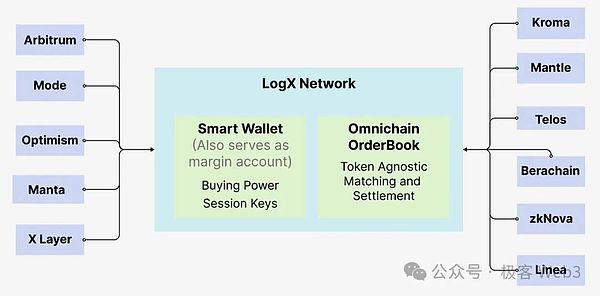
(LogX Network cross-chain liquidity provisioning)
In today’s DEX field, competition in UX is becoming increasingly fierce.When DEX first emerged, simple improvements in the user interface could significantly improve UX. As the user interface gradually converged, DEX began to compete for UX by introducing features such as gas-free transactions, session keys and social login.
In fact,CEX usually has deeper integration in the ecosystem, not only providing core transaction services, but also acting as a user entrance and cross-chain bridge, while DEX is usually confined to a single ecosystem.Now cross-chain DEX is breaking this limitation. For example, the DEX aggregator can integrate the liquidity and price information of multiple DEXs into one interface to help users find the best trading pairs and slippages, which can be understood as a trading router.
Many DEX aggregators, such as Vooi.io, are being developedThe intelligent routing system integrates the functions of multiple DEX and cross-chain bridges to provide a simple and friendly transaction experience.This type of DEX aggregator can find the most efficient transaction path on multiple chains, making the transaction process simpler and less expensive.Most importantly, users can manage complex transaction paths through just a simple interface.
in addition,Telegram trading robots are also constantly optimizing UX.This type of robot can provide real-time transaction reminders, transaction execution and portfolio management functions, and can be easily completed directly in the Telegram chat interface.This in-depth integration enhances trading convenience and engagement, making it easier for traders to obtain information and seize market opportunities.Of course, Telegram robots also have major risks: users need to provide private keys to the robots, which may face security risks.
Innovative financial products in perpetual contract DEX
Many perpetual contract DEXs on the market have been continuously launching new financial products, or optimizing the trading mechanism of existing products to simplify the trading process to better meet the changing needs of traders.Let us briefly introduce this type of product below.
Variance Perpetual Contract
Variance is a common statistical indicator designed to reflect the degree of discreteness of a set of data.As the name implies,The transaction content of a variance perpetual contract is no longer the price of the underlying asset, but the volatility of the asset.
For example, suppose you think that the price of BTC will fluctuate violently, but you are not sure about the direction of change. At this time, you can buy the variance perpetual contract of BTC and place a bet on the event that “the price of BTC will fluctuate violently over a period of time”.Whether BTC rises or falls later, or fluctuates in the market, you will make a profit.
besides,Variance perpetual contracts also have the effect of hedging risks, such asIn the above example, once BTC falls sharply, the contract returns will offset part of the losses due to you holding the variance perpetual contract.
Decentralized perpetual contract exchange Opyn is leveraging existing market resources to develop novel variance perpetual contract products that can not only simulate complex strategies, hedge risks, but also improve capital efficiency.
Opyn’s perpetual contract products include Stable Perps (0-perps), Uniswap LP Perps (0.5-perps), Normal Perps (1-perps) and Squared Perps (2-perps, also known as Squeeth).Each contract product has its own specific purpose:
Stable Perps provides a solid foundation for trading strategies; Uniswap LP Perps can reflect LP’s earnings performance without directly providing liquidity; Normal Perps is the most common contract type; and Squared Perps can be used to open secondaryEnlarge the profit potential.
These perpetual contracts can be combined into more complex strategies.For example, “crab strategy”: By shorting 2-perps while longing 1-perps, you can earn capital rates in a stable market while maintaining a balanced directional exposure.For example, the “Zen Niu Strategy”: combining short selling 2-perps, long selling 1-perps and short selling 0-perps can earn capital rate returns while maintaining long exposure in the stable market.

(Decentralized Perpetual Contract Exchange Opyn)
Pre-Launch Contract
Pre-Launch perpetual contract allows traders to speculate on their future prices before the Token is officially launched, which can be understood as an on-chain version of IPO OTC.Allow investors to build positions in advance based on the expected market value.Multiple perpetual contracts such as Aevo, Helix and Hyperliquid have pioneered a new model for Pre-Launch.The main advantage of the Pre-Launch contract is its ability to provide exclusive assets that are not available on other channels, attracting and retaining users.
RWA Asset Perpetual Contract
RWA asset perpetual contracts may become the main way for real assets to be put on the chain.Compared to directly tokenizing RWA assets in spot form, it is easier to put them on the chain in the form of a perpetual contract, and only requires liquidity and price oracle.Moreover, even if there is no spot market on the chain, a perpetual contract market with good liquidity can be built because perpetual contract transactions can operate independently from spot.
Perpetual contract trading is the first step for RWA assets to move towards spot tokenization. Once sufficient attention and liquidity are accumulated through the perpetual contract market, spot tokenization can be further promoted.The combination of spot and perpetual contracts to RWA can provide new ways to predict market sentiment, event-driven trading, and execute cross-asset arbitrage strategies.Currently, companies such as Ostium Labs and Sphinx Protocol are gradually emerging in the RWA contract field.
ETP Perpetuals
ETP tracks the performance of some underlying assets or indexes, and their value is usually based on the performance of the underlying assets, such as stocks, bonds, commodities, currency, or other portfolios of assets.Common ETPs include:
ETF:Track the performance of a specific index or industry.
ETN:Similar to bonds, but their returns are linked to the performance of the underlying index or assets.
ETC:Focus on the commodity market and track commodity prices.
ETP perpetual contracts can also be used to create ETPs holding maturing futures contracts, such as ETFs – USO (futures for West Texas Intermediate Crude Oil WTI) and ETN – VXX (S&P 500 Volatility Index VIXfutures).Because there is no need for rollover operations, ETP perpetual contracts can reduce transaction fees and reduce the risk of depreciation of the net asset value (NAV).For companies that require long-term economic exposure protection but do not require physical delivery, perpetual contracts can significantly reduce operating costs.
In addition, for those cases where speculation or hedging foreign currency risks are limited, 30-day or 90-day forward contracts are usually involved.This type of contract is neither standardized nor requires over-the-counter trading, which is very risky.However, this situation can be replaced by a perpetual contract settled in USD, simplifying operations and reducing associated risks.
Prediction markets
The forecast market is a noun, a branch of the financial market, in which participants can trade and bet on the results of future events,For example, election results, sports competition victory or defeat, changes in economic indicators, etc.
Perpetual contract DEX can revolutionize the forecast market by providing flexible and continuous trading mechanisms, especially in irregular events such as election or non-regular weather forecasts.Unlike traditional forecasting markets that rely on real events or oracles, perpetual contracts allow the creation of forecasting markets based on the market itself’s constantly updated data.
This brings a significant advantage: Continuous updates of data can generate multiple submarkets in long-term forecast markets, such as during general elections, where submarkets can trade around changes in support for a candidate after a particular debate.Due to the existence of a sub-market, users do not have to wait for the final result of long-term events to participate in the transaction, but can conduct trading operations based on short-term fluctuations in the market, such as the impact of a certain news event, data release at a certain moment, etc.This provides users with short-term trading opportunities and brings instant trading satisfaction.
The continuous real-time settlement of perpetual contracts ensures the stability of market activities, enhances liquidity and improves user participation.In addition, the community-controlled perpetual contract market incentivizes participation through reputation and token reward mechanisms, laying the foundation for the decentralized forecasting market. This design makes the creation of the market more democratic and provides various forecasting scenariosScalable solution.
Future Outlook for Perpetual Contract DEX
With the development of the crypto financial system, the design of the perpetual contract DEX is also constantly being optimized. The focus in the future may not only be to replicate the functions of CEX, but to better utilize the unique advantages of decentralization – transparency and composability.and user empowerment to design some brand new features.The ideal perpetual contract DEX design requires a delicate balance between efficiency and security.
In addition, perpetual contract DEX also pays more and more attention to the participation of the community and developers, and increases the user’s sense of belonging and loyalty through various mechanisms.Community-led measures such as using Hyperliquid robots for market making can allow more users to participate in trading activities fairly and truly implement the inclusiveness of decentralized transactions.
To promote the massive popularity of cryptocurrencies, it is crucial to create a platform that is integrated and has a great user experience like iOS.To this end, a more intuitive user interface is needed to be developed and the entire usage process is smooth.In addition, perpetual contract DEXs such as Hyperliquid, LogX and dYdX cover more than just finance, but also various fields such as elections and sports, providing new ways for the public to participate in crypto transactions.
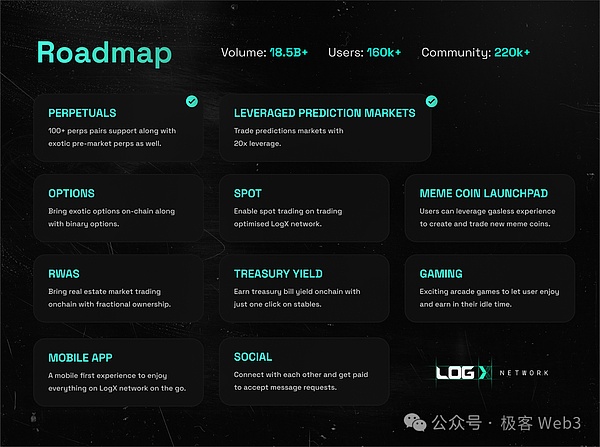
(Roadmap of LogX Network)
In the past decade, the development of DeFi has been mainly concentrated in the fields of DEX, lending and stablecoins. In the next decade, DeFi may be cross-integrated with news, politics, sports and other fields, and is expected to become a widely used tool, furtherPromote mass adoption of cryptocurrencies.

